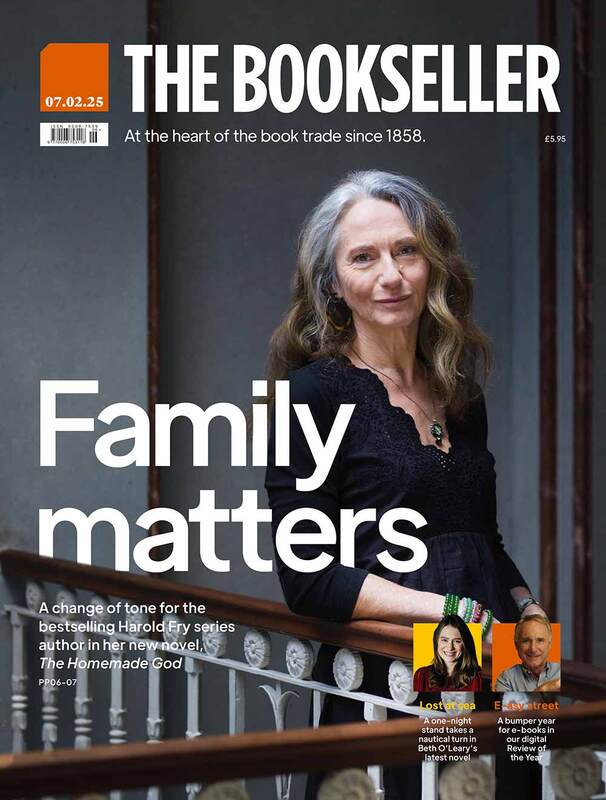You are viewing your 1 free article this month. Login to read more articles.
Feather in its cap: Faber’s stand-out campaign propels Porter’s second novel
How to follow up a bookselling sensation like Grief is the Thing with Feathers? This was the key question facing Katie Hall, Rachel Alexander and Kate Burton at Faber for the publication of Max Porter’s second novel, Lanny.
Hall, marketing director at Faber, says: "Lanny is a gift of a novel for a campaign, it is packed with timely themes and ideas, and we felt we had an opportunity to make this a top-10 bestseller." The trio needed to ensure it stood out on its own, and cemented Porter’s literary reputation.
Both marketing and publicity started early, announcing Lanny a year ahead of publication through a teaser billboard at the London Book Fair and on Faber’s social channels, as well as working with Porter’s agent for a co-ordinated global announcement, and sending proofs to a small number of vocal supporters. The indie publisher was, as communications director Alexander says, "blessed with an author who is articulate at communicating his work, an extraordinary reader, and one who has touched such big audiences with Grief is the Thing with Feathers."

The team put Porter to work straight away, beginning with a reading at Faber’s sales conference. The first proofs were also mailed out around this time, with further copies sent out in stages to raise awareness two months before publication, and then again a few weeks later. The trio aimed for the biggest literary press slots and placed key interviews in the Guardian Review, Telegraph and Irish Times, among others.
Early on, Porter also hosted a day of letterpress printing at the London Centre for Book Arts, highlighting the theme of art and craft in rural England. There the participants produced 1,000 prints featuring extracts from the book. Porter signed these, and illustrated some as well. Crucially, the team turned this into online content, producing a series of author films on the day, along with readings from the book.
Aware there was already a groundswell of support for Porter within the industry and among booksellers—owing to the writer’s past work as both bookseller and publisher—Hall established a pre-order partnership with Waterstones, which took 650 of the signed prints and drove early sales through its newsletter and social channels. The remaining prints were shared with independents and Foyles, along with a run of p.o.s. materials to facilitate window displays.
Alexander and publicity manager Burton worked to build a large UK author tour, working closely with Waterstones, key independents and literary festivals. Pulling again on the book’s themes, they emphasised the importance of voice, form and dramatic chorus by creating events with live-performance elements. This was embodied in a preview reading at the Southbank Centre, a show which included Kenneth Cranham, Stephen Mangan, Lydia Wilson, and music from folk band Alula Down, which was also invited to be part of the book’s launch, in Bath. The result was a wellspring of anticipation ahead of publication, which was followed with three consecutive weeks of touring and broadcast/podcast interviews. Again, the team emphasised the book’s themes, such as folklore, childhood and fairytales, empathy and community—these were discussed on BBC Radio 4’s "Open Book", BBC Radio 3’s "Free Thinking", and more.

One challenge the marketing team faced was the jacket design. The stark woodcut lettering created by designer Jonny Pelham was stunning, but perhaps didn’t lend itself to marketing materials in the same way as Grief’s now-iconic black crow. The marketers decided to own the challenge, keeping their visuals as trimmed-down as the cover itself, and scoured the book to pull out the unusually-set text as a key feature. This became the basis for window vinyls, tote bags and online assets.
In the age of Instagram, physical advertising has to be striking and photographable—Faber chose a passage from the book for billboard display, keeping the title and author branding more discreet. The result felt like the best of arts promotion, creating the impression of a cult phenomenon which passersby should already know about. London Underground advertising ran for two weeks from publication and featured the jacket, full-bleed, with a host of author endorsements.
Asked if the team reached its goals, Hall says: "Lanny was a top-10 bestseller on publication and strong sales continue through the incredible support it has seen through the trade, so yes, we have reached our objectives! The response has been phenomenal, and our campaign will continue to paperback publication and beyond."













